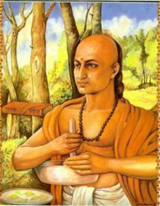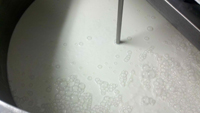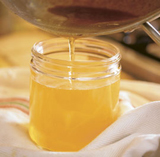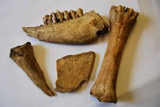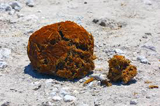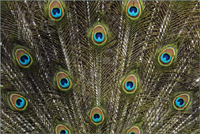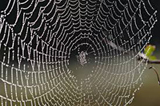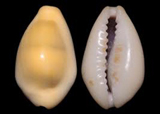Āyurveda
A review Of jāṅgama dravyas (animal products) in the commentary of Siddhabheṣajamaṇimālā
Abstract
Animals and animal products play an important role in our lives. Every day we use various products, such as milk and milk products, meat, eggs, etc. The whole range is documented in a vast and complex way in Āyurvedic science. In various classical texts, clinical applications of animal products are to be found. So it is very important to study those which can be used for a healthy life and to prevent disease. This study deals with the clinical applications of different animal products described in Siddhabheṣajamaṇimālā, a classical text of the 18th Century.
Background of Siddhabheṣajamaṇimālā
The text, Siddhabheṣajamaṇimālā was written by Mahākavi Kṛṣṇarāma Bhaṭṭa. It is mainly a cikitsā-grantha. All the traditional experiences of the Rājavaidya Bhaṭṭa family have been compiled and documented in this text. The original text is not available now. In the name of Siddhabheṣajamaṇimālā, two books are available. These are Vaiśvānara (1) a Hindi commentary written by the author’s grandson, R. Kalādhara Bhaṭṭa and Maṇicchaṭṭā (2), also a Hindi commentary written by Vaidya Devendra Prasāda Bhaṭṭa, another grandson of the author. The verses of the original text differ in these two editions. For the current study, the first book has been selected.
The subject matter
All creatures that are able to walk or crawl (i.e. able to move) are considered as jāṅgama (3). Jāṅgama dravyas are defined as the products that have originated in the animal kingdom, e.g. honey, milk, blood, urine, bone, etc. These are sub-divided into four classes : 1. jarāyuja (animals which have placental birth) , e.g. man; 2. aṇḍaja (aves/birds) and reptiles, etc. which have their birth through eggs), e.g. crows; 3. svedaja (creatures which have their birth in sveda, dirty water, etc. ), e.g. flies; 4. udbhijja (smaller creatures and animals which are born in mud or clay, etc.), e.g. frogs (4).
Ḍalhana enumerated certain exceptions in the above categories. Among birds balākā (a crane variety) is jarāyuja as well as aṇḍaja. Among snakes ahipātaka (a kind of snake) is jarāyuja only. Among svedas certain ants are aṇḍaja as well as udbhijja(5).
The ancient scholar, Caraka has quoted the following items as animal products (6) — honey, milk and milk products, bile, lard (vasā), bone marrow, blood, meat, urine, skin, semen, bone, ligaments, horns, nails, hoofs, hair, choliolyths, testes, urinary bladder, etc. Other animal products like kastūrī (musk), ambara, puṭi, etc. were added to the materia medica later on.
In Siddhabheṣajamaṇimālā, the author had added various new dravya in the field of Āyurveda, e.g. khaṭamala-rakta, vandara-purīṣa, kukkuṭāṇḍa-tvak, hastī-nakha, māhiṣa-karṇamala, etc. A total of twenty-nine jāṅgama dravya and their guṇa-karma are indicated in this text. These are as follows:
1. Dugdha (milk)
Go dugdha (cow’s milk) is the most common animal product used by mankind as food. It has śāmaka, kaphakāraka, kāmaprabodhaka, snigdha, balya, buddhivardhaka (2/253)1, guru, sāraka, jīvanīya, vāta-pitta chedaka, vīrya-vardhaka, śītala, stanya (2/255) properties. It is indicated in mada, bhrānti, śvāsa, anilaroga, raktapitta, kṣaya, jvara (2/253), rājayakṣmā(4/rājayakṣmā/9), abhighāta, nipātajanya mūrcchā (4/mūrcchā/1), unmāda (4/unmāda/2), vātavyādhi (4/vātavyādhi/8), prameha (4/prameha), vājīkaraṇa (5/vājīkaraṇa/158), mada, vidāha, bhrama, viṣa, raktavikāra, jīrṇajvara, mūtrakṛcchra (2/255).
Kṛṣṇra go-dugdha (milk of black cow) is vātaśāmaka, guṇrakāraka, while pīta go-dugdha (milk of yellow cow) and śvetagaya dugdha (milk of white cow) are depicted as vāta-pitta śāmaka and kaphakāraka respectively (2/256).
Dhenu dugdha (milk of a certain variety of cow) is balakāraka, santarpaka, bhedaka, tridoṣa hara (2/256).
Vatsa-viyuga go dugdha (milk of a cow whose calf has died) is tridoṣakāraka (2/256). Sadyobhuva go-dugdha (milk of a cow that has recently delivered) is used in prameha (4/prameha/23). Dhārāśīta dugdha (cold expressed cow's milk) is prescribed in tridoṣa prakopaka (2/258) while dhāroṣṇa dugdha (warm expressed cow‘s milk) is indicated in granthi, dadru, visphoṭa janya roga (4/raktapitta/15), arśā (4/ar[a/47), dāha (4/dāha/1) and is considered as amṛtatulya (2/258). Āma go-dugdha (unboiled cow’s milk) has abhiṣyandi, guru, kapha, āmavardhaka properties (2/258) while uṣṇa go dugdha (boiled cow’s milk) is mentioned as having kapha vardhaka, vāta hara (2/259) and vāta, dāha nāśaka, smṛti-kara properties (2/258). Phena of dhāroṣṇa dugdha (supernant froth of cow’s milk) is indicated in vāta-kapha roga, raktapitta, kṣaya, atisāra, aruci, jvara and is mentioned as useful for kṛśa, vṛddha, bālaka (2/246). Dugdha santānikā (top fat part of milk) is indicated in śuṣka-kāsa (4/hikkāsvāsakāsa/15). Nira-vīnā go-dugdha (cow’s milk without water) is mentioned as baladāyaka, sāraka and used in mandāgni roga (2/261), while ardhāmbu yukta dugdha (cow’s milk with half water) is considered as doṣanāśaka, laghu, uttama (2/261).
Moraṭa is indicated in pittajvara, rudhirasrāva, aruci and śoṣa (4/raktapitta/14).
Besides various preparations of milk, some regimens of taking milk have also been emphasised. Kevala-dugdha-bhojana (taking only milk) is prescribed in cāturthakajvara (4/jvara/14). Aparāhṇe dugdha sevana (taking milk in the evening) is mentioned as vātahara, āyuḥprada, rogahara, balya while prabhāte dugdha sevana (taking milk in the morning) is said to be agnimāndakara, kaphavardhaka (2/260).
Ajādugdha (goat’s milk) is tridoṣahara, laghu, śītala, saṁgrāhī, sarvottama and is indicated in raktapitta, pipāsā, kāsa, śvāsa, mada, kṣaya, jvara (2/257), vamana, atisāra (4/atisāra/4), prameha (4/prameha/12), kṣaya, arśa (2/268) and saujakaupadaṁśa (4/68).
Māhiṣa dugdha (buffalo’s milk) is said to have śītala, guru, atibalyakāraka, madhura, abhiṣyandi, nidrāprada, śukrala, jaṭharāgnimāndyakara, snehala properties (2/257). Besides medicinal uses, buffalo milk is also used in pārada śodhana (5/87). Meṣī kṣīra (sheep’s milk) is prescribed in asrigadara cikitsā (4/8).
2. Ghṛta (ghee)
Ghṛta (cow’s ghee), as mentioned in Siddhabheṣajamaṇimālā, is rucikara (2/192), pathya (2/201), tuṣṭi-puṣṭi-bala-vīryavardhaka (2/202). It is madhura vipākī and considered as the best (sarvottama). It also has dāha śāmaka, vāta vināśaka, vṛṣcya, pravāhikānāśaka (2/275), rucikara, agnivardhaka (4/aruci/26) properties. It is indicated in āma-atisāra (4/atisāra/20), raktārśa (4/arśa/10), abhighāta, niptajanya mkrcch (4/mkrcch /1), granthi vikāra (4/vrana/5), pāma roga (4/kuṣṭha/12) and vājnkaraṇa cikitsā (5/135). Māhiṣa Ghṛta (ghee of buffalo’s milk) is kapha kāraka, raktapitta, vātanāśaka (2/2). Ajā-Ghṛta (ghee of goat’s milk) is indicated in kāsa, netraroga (2/275). Śatadhauta ghṛta is very useful in arśa cikitsā (4/arśa/14).
3. Dadhi (curd)
Dadhi has the properties of dīpana, kaphahara, raktapittakara, śothakara, rucikara, abhiṣyandi, grāhī (2/267). It is indicated in apasmāra (4/apasmāra/2); atisāra (4/atisāra/16). Uttama guṇayukta dadhi (the best quality curd) has madhura vipāka, balya, vātahara properties and is considered as parama-pavitra (auspicious) (2/267). Malāi rahita dadhi (curd without butter) is used in grahaṇī roga (4/grahaṇī /4). Māhiṣa-dadhi (curd of buffalo’s milk) is kaphakāraka, snigdha, vāta-pitta nāśaka (2/267). Ajā-dadhi (curd of goat milk) is grāhī, tridoṣanāśaka, madhura and laghu. It is indicated in śvāsa, kṣaya, arśa, kāsa, pipāsā, raktapitta vikāra, dāha, kṣaya (2/268).
4. Takra (buttermilk)
Takra is grāhī, agniprada, tridoṣanāśaka, and laghu. It is indicated in grahaṇī, mūktrakṛcchra, arśa nāśaka, pāṇḍu, plīhā, prameha, udara, udāvarta, ugra gulma, ajīrṇa, kṣaya (2/270) and yoni-śūla (4/stri/10).
5. Navanīta (butter)
Navannta (butter of cow milk) has dīpana, raktapitta, vātanāśaka, tejavardhaka, śītala, grāhī, vīryavardhaka properties. It is indicated in kāsa, arśa (2/174). Māhiṣa navanīta (butter of buffalo’s milk) has guru, kapha-vātakāraka, śukrala properties and is used in raktapitta śāmaka (2/273).
6. Madhu (honey)
Honey is one of the most important medicinal substances mentioned in the Āyurvedic classics.
Siddhabheṣajamaṇimālā has used madhu in numerous instances. Madhu has laghu, rūkṣa, grāhī, agnivardhaka, svarya properties. It is indicated in mada, śvāsa, raktavikāra, arśa, tridoṣa, vamana, krimi, klama, kāsa, pipāsā, meda, meha, aruci, kuṣṭha, hikkā, vidāha roga and is atimedhya, prabhāvardhaka (2/281). It is also used in āma-atisāra cikitsā (4/atisāra/15), kāsa cikitsā (4/kāsa/20); pitta, rudhira vikāra (4/kāsa/22); hikkā, śvāsa, agnimāndya, kapha-vāta pradhānavikāra (4/hikkā/6), śvāsa roga (4/śvāsa/24), vātaroga, sandhivāta (4/vāta/18), and vājīkaraṇa cikitsā (5/138). Old honey is indicated in atisāra cikitsā (4/atisāra/32), grahaṇīroga (4/grahaṇī / 9).
7. Rakta (blood)
Blood of sub-human species has also been used for treatment in Siddhabheṣajamaṇimālā. Kṛṣṇavarṇa gardabha rakta (blood of black donkey) is indicated for hastamaithuna janya śithīlatā (5/118). Khaṭamala rakta (blood of bugs) is prescribed in apasmāra cikitsā (4/apasmāra/10) and yūkā rakta (louse blood) is used in bala roga cikitsā (4/bala/6).
8. Mamsa (meat)
Ajā māṁsa (meat of goat) is mentioned as kāmoddīpaka (5/176).
9. Asthi (bones)
Siddhabheṣajamaṇimālā mentions the medical use of bones of various animal species. In the text, nakula asthi (bones of mongoose) and nara asthi (human bones) are indicated in bhagandara cikitsā (4/bhagandara/2,3), while nara mastaka asthi (human skull bones) are used in nāḍīvraṇa cikitsā (4/nāḍīvraṇa/2). Kūrma kapālasthi (tortoise bone) is indicated in nāḍīvraṇa cikitsā (4/nāddnvraṇa/14).
10. Snayu (nerve)
Garuda-pakṣī-snāyu(nerve of birds) is indicated in snāyuka roga cikitsā (4/snāyuka/10).
11. Nakha (nails)
Hastī nakha (nails of elephants) is used in nāḍīvraṇa cikitsā (4/nāḍīvraṇa/13), while manuṣya nakha (human nails) is indicated in nāḍīvraṇa cikitsā (4/nāḍīvraṇa/13).
12. Śṛṇga (horn)
This is a component in the Āyurvedic compendium. In Siddhabheṣajamaṇimālā only three sṛnga have been mentioned. Sambhara śṛṇga (deer horn) is indicated in hṛdayaśūla, bhrama, nirbalatā, vāta-kapha janya vikāra (4/13), while vṛṣa-śṛṇga (bull horn) is used in arśa-cikitsā (4/arśa/14). Murḍa śṛṇga (deer horn) is also indicated in arśa cikitsā (4/arśa/10).
13. Mūtra (urine)
Animal urine is considered an important substance of medicinal value and is mentioned in almost all Āyurvedic texts. The urine of eight animals has been mentioned in the scientific use for various diseases in the Āyurvedic classics.
In Siddhabheṣajamaṇimālā, urine of four animals has been mentioned for therapeutic use. Gomūtra (cow urine) has kaṭu, tikta, uṣṇa, tīkṣṇa, kṣāra, laghu, agnidīpaka, medhya, pittavikāra, vāta-kaphahara properties and is used in gulma, udara, ānāha, kaṇḍu, śūla, mukha, netravikāra, kāsa, śvāsa, ugrakuṣṭha, krimipīḍā, plīhā, vibandha, pāṇḍu, pāma, āmavāta, śotha roga (2/276), pāṇḍu roga (4/pāṇḍu /13), udāvarta cikitsā (4/udāvarta/5) and svarabheda (4/svarabheda/3). It is also mentioned as rucikara, sandhānakara (2/197). Apart from medicinal uses, it is also used in pārada śodhana (5/12). Māhiṣa mūktra (buffalo urine) is used for pacifying amavātajanya pīḍā (4/vta/46) and udara roga (4/udara/43). Gadāha mūktra (donkey urine) is indicated for pacifying udara śūla (4/śūla/10), while ajā mūtra (goat urine) is used in mūtrāghāta cikitsā (4/mūtra/3).
14. Purīṣa (stool)
Animal stool has been mentioned for internal and external uses in various instances in the text. In Siddhabheṣajamaṇimālā, the medicinal use of stool of cow, buffalo, goat, donkey, elephant, mouse, monkey, pigeon and fly has been categorically mentioned. Gopurīṣa (cow dung) is used for chikkā-kara (4/nāsā/6) while mahiṣa-vatsa purīṣa is indicated in udara roga (4/udara/43), mukha-roga (4/mukha/9) and pārada śodhana (5/86). Ajā purīṣa (goat stool) has been indicated in udara roga (4/udara/47) and mūtrāghāta (4/mūktra/3). On the other hand, khari-līḍa (stool of donkey) is used in nāsā-gata-rudhira-srāva (4/raktapitta/13). Hasti līḍa (elephant stool) is marked in vṛṣā-vṛddhi (4/vṛddhi/1). Mūṣaka līḍa (stool of mouse) has been pointed out in aśṛgdara cikitsā (4/aśṛgdara/8) while vānara purīṣa (stool of monkey) is suggested in vājīkaraṇa cikitsā (5/117) and arśa cikitsā (4/arśa/18). Kapota viṣṭhā (stool of pigeon) has been indicated in tīvra-rakta gata-kapha prabriti (4/rājayakṣmā/8) and arśa cikitsā (4/arśa/5). The author also has medically used makkhi viṣṭhā (stool of fly) in vātavedana (4/vāta/43).
15. Karṇamala (ear wax of buffalo)
Karṇamala of mahiṣa is medically used in mūtrakṛccha cikitsā (4/11).
16. Ulūkapakṣa (feather of owl)
Ulūkapakṣa is specifically used in cāturthika jvara(4/jvara/112).
17. Kukkuṭāṇḍa (egg)
Dakṣa-aṇḍa has been mentioned as an internal medicine in saujakaupadaṁśa cikitsā (4/saujaka/62), karṇa roga cikitsā (4/ karma /12) and vājīkaraṇa cikitsā (5/119).
18. Mayūrapiccha (tail of peacock)
Mara-piccha is used for vṛṣhaka-daṁśa viṣa nāśana (4/visa/3), in snāyuka roga (4/ snāyuka/7) and karṇa roga (4/karṇa/15).
19. Kastūrī (musk, naval of Moschus moschiferus)
Kastūrī is mentioned as having śukra vardhaka, vāta-kapha nāśaka, viṣahara, vāmaka, śoṣaka, śitabhara śāmaka properties (2/112). In addition to these śntanāśaka, pittala, hṛdya, grahaghna (2/113) properties of kastūrī have also been mentioned, like ambara which is used for its vājīkaraṇa effect (5/131).
20. Ambara (ambergris)
Ambara is mentioned as a substance having sugandhi dravya, pittala, hṛdya, graha nāśaka properties (2/113); it is also used in vājīkaraṇa (5/131).
21. Gorocanā (gall bladder of cow)
Gorocanā is mentioned for eradication of utphullikā roga (4/bāla/ 15, 21).
22. Samudraphena (sea-foam, cuttlefish)
Samudraphena has been mentioned in karṇa roga (4/karṇa/15).
23. Markaṭī jāla (spider web)
Spider webs are usually not used as medicine but in this text this is used in nāḍīvraṇa cikitsā (4/jvara/98), vamana cikitsā (4/chardi/7) and snāyuka roga cikitsā (4/snāyuka/2).
24. Matsya (fish)
Matsya has been used in tṛtīyaka and cāturthaka jvara (4/jvara/124).
25. Muktā (pearl)
Muktā has been indicated in dhātugata jvara (4/jvara/60), kṣayaja-kāsa and kapha (95/45), agnimndya (5/46) and in vājnkaraṇa for kāma-bhāva vardhana (5/167).
26. Prabāla (coral, Corallium rubrum)
In a number of disease conditions, prabāla has been used. They are grahaṇī, raktarśa, daurbalya, aruci (4/udara/14); arśa roga (4/arśa/48), prameha cikitsā (4/ prameha/12, 13). Besides this, it is also used as kāma-bhāva vardhaka (5/167).
27. Śaṇkha (conch shells, Turbinella pyrum)
Śaṇkha has been prescribed in cāturthāka jvara (4/jvara/78).
28. Śukti (pearl-oyster)
Śukti is used in prameha cikitsā (4/ prameha/13), nāḍī vraṇa cikitsā (4/nadi vrana/3), and pāmā (4/kuṣṭha/20).
29. Kapardikā (Cypraea monrta, Linn.)
Kapardikā has been used in various instances in the text namely in liver and spleen diseases, udarāmaya, gulma vikāra (4/udara/14); in granthi, sphoṭa, vraṇa, dadru (4/ vraṇa/5), while the yellow variety of varāṭnkā is used in śirsajanya koṭha and prapāka (4/kṣudra/15).
Discussion
Among the twenty-nine mentioned jāṅgama dravya, some are common like cow, buffalo, goat and sheep’s milk and milk products, urine and faeces; donkey’s faeces and urine.
Some other dravya are common but the indications are different like kapota viṣṭhā (faeces of pigeon), yūkā rakta (blood of leech), khari līḍa (donkey’s faeces), matsya (fish), etc.
Apart from the above dravya, some have been introduced by the author himself. These newly iṇovated dravya are khaṭamala rakta (blood of bed bug), buffalo’s ear wax (Māhiṣa karṇamala), mānuṣya nakha (human nails), hastī nakha (nails of elephant), vānara purīṣa (monkey’s faeces), mūṣaka līḍa (faeces of mouse), markaṭn jāla (spider web), makhi viṣṭhā (faeces of house fly), garuḍa pakṣī snāyu (nerves of eagle).
The above facts suggest that jāṅgama dravya are scientifically and categorically used in various clinical conditions in Siddhabheṣajamaṇimālā but analytical evaluations of the jāṅgama dravya are needed for future research activities.
Conclusion
Siddhabheṣajamaṇimālā has been composed through consultation of the previous text in the parlance of the traditional wisdom of the Bhaṭṭa School. Various local and traditional dravya (jāṅgama, audbhida and bhauma) prevalent in various traditions of Rajasthan and Gujurat had been incorporated to make it practical and user-friendly. In this era, almost all the animals come under Animal Protection Act and therefore the number of animals used and their products are restricted. However, a knowledge of some of these products can help many people find cheap and effective means of cure from many ailments.
References and bibliography
1. Bhaṭṭa, Sri Krishnaram: Siddhabheṣajamaṇimālā with Vaishwanara Hindi Commentary by Sri R. Kaladhara Bhaṭṭa and Notes by Sri Lakxmiram Swami Chowkhamba Krishnadas Academy. 4th edition. Varanasi: 2008, p. cover page.
2. Bhaṭṭa, Sri Krishnaram: Siddhabheṣajamaṇimālā with Manicchata Hindi Commentary by Sri Devendra Prasad Bhatta. Jaipur: Sri Krishna-granthamala; 1994, p. cover page.
3. Agnivesha. Caraka saṁhitā with Āyurveda Dipika Commentary by Cakrapani Datta Chaukhamba Surbharati Prakashana. Varanasi: 2005, p. 20.
4. Suśruta. Suśruta saṁhitā, with Nibandhasamgraha Commentary. Varanasi: Krishnadas Academy; 1998, p. 15.
5. Yadavji Trikamji Ecarya (ed.). Suśruta. Suśruta saṁhitā, Sutrasthana. 1/30 with Nibandhasamgraha Commentary by Ḍalhana. 6th ed. Varanasi: Chaukhamba Orientalia; 1997. p. 8.
6. Agnivesha: Caraka saṁhitā with Ayurveda Dipika Commentary by Cakrapani Datta Chaukhamba Surbharati Prakashana Varanasi: 2005, p. 31.
Sl |
Terms |
Equivalent meaning |
| 1 | Abhighāta | Trauma |
| 2 | Abhiṣyandi | Trickling |
| 3 | Agnimāndakara | Causing suppression of digestive fire |
| 4 | Ajīrṇa | Indigestion |
| 5 | Āmavardhaka | Increasing āma |
| 6 | Amṛtatulya | Like ambrosia |
| 7 | Anilaroga | Diseases of vāta |
| 8 | Apasmāra | Disease in which patients suffer from transient loss of consciousness with convulsions |
| 9 | Arśa | Disease in which patient is suffering from bleeding per rectum |
| 10 | Aruci | Anorexia |
| 11 | Atibalyakāraka | Enhancing strength |
| 12 | Atisāra | Loose stool |
| 13 | Ayuhprada | Promoting longevity |
| 14 | Balakāraka | Improving strength |
| 15 | Balya | Improving strength |
| 16 | Bhedaka | Causing purgation |
| 17 | Bhrama | Giddiness |
| 18 | Bhrānti | Perplexity |
| 19 | Buddhivardhaka | Improving intellect |
| 20 | Cāturthaka jvara | A type of remittent fever which comes on every fourth day |
| 21 | Chedaka | Remover of the vitiated tumours of the body ; purgative |
| 22 | Cikitsā-grantha | Medical text |
| 23 | Dadru | A variety of circular skin lesion with itching |
| 24 | Dāha naśaka | Pacifying dadru |
| 25 | Dīpana | Appetizer |
| 26 | Doṣanaśaka | Pacifying body tumour |
| 27 | Grāhī | Constipating |
| 28 | Guru | Heavy |
| 29 | Hikka | Hiccup |
| 30 | Hṛdayaśūla | Pain in chest |
| 31 | Jatharagnimandakara | Causing suppression of digestive fire |
| 32 | Jīrṇajvara | Chronic fever |
| 33 | Jīvanīya | Vigorating |
| 34 | Jvara | Fever |
| 35 | Kāmaprabodhaka | Libido-enhancer |
| 36 | Kamoddīpaka | Libido-enhancer |
| 37 | Kapha vardhaka | Increasing kapha |
| 38 | Kaphakaraka | Increasing kapha |
| 39 | Kāsa | Cough |
| 40 | Kṛśa | Emaciation |
| 41 | Kṣaya | Depletion |
| 42 | Kuṣttha | Skin diseases |
| 43 | Laghu | Light |
| 44 | Mada | Intoxicated state |
| 45 | Mutrakṛcchra | Dysuria |
| 46 | Nadīvraṇa | Lesion with sinus |
| 47 | Netraroga | Eye disease |
| 48 | Nidraprada | Inducing sleep |
| 49 | Nirbalata | Loss of strength |
| 50 | Pāma | A variety of skin disease |
| 51 | Paṇḍu | Pallor |
| 52 | Pathya | Compatible |
| 53 | Pipāsā | Thirst |
| 54 | Plīhā | Disorder of spleen |
| 55 | Prameha | Urinary disorder |
| 56 | Prapaka samana | Reducing suppuration |
| 57 | Pravāhikānāśaka | Rectifying pravāhika, a disease where patient passes semi-solid stool with mucus and tenesmus |
| 58 | Rājayakṣmā | Phthisis |
| 59 | Raktavikāra | Blood disorder |
| 60 | Rucikara | Palatable |
| 61 | Rudhirasrāva | Oozing of blood |
| 62 | Śāmaka | Pacifier |
| 63 | Saṁgrāhī | constipating |
| 64 | Santarpaka | Invigorating |
| 65 | Sāraka | laxative |
| 66 | Sarvottama | Best |
| 67 | Saujakaupadaṁśa | A variety of gonorrhoea |
| 68 | Sirsajanya kotha | Eruptive lesion in scalp |
| 69 | Śītala | Cold |
| 70 | Smṛti kara | Enhancing memory |
| 71 | Snayuka roga | Neurological disorder |
| 72 | Snehala | Causing unctuousness |
| 73 | Snigdha | Unctuous |
| 74 | Soṣa | Emaciation |
| 75 | Śothakara | Causing oedema |
| 76 | Sphotha | Eruptive skin diseases |
| 77 | Stanya | Increasing breast milk |
| 78 | Śukrala | Enhancing sperm count |
| 79 | Śvāsa | Respiratory distress |
| 80 | Tridoṣakāraka | Causing vitiation of tridoṣa |
| 81 | Utphullika roga | An eruptive disorder of baby |
| 82 | Uttama | Best |
| 83 | Vajikarana | Aphrodisiac |
| 84 | Vamana | Vomiting |
| 85 | Vāta hara | Pacifying vāta |
| 86 | Vidāha | Burning sensation |
| 87 | Vnrya-vardhaka | Enhancing vigour |
| 88 | Viṣa | Poison |
| 89 | Vrana | Abscess, elevated skin lesion |
| 90 | Vṛddha | Old age |
| 91 | Vrishya | Aphrodisiac |
| 92 | Yoni sūla | Pain in vagina |
1adhyaya or guccha ( chapter)/prakarana (context)/ssloka no. (verse no.)
Dr. Asit Kumar Panja is Assistant Professor at the Dept. of Basic Principles, National Institute of Ayurveda, Jaipur, Dr. Ruprekha Dutta is Senior Ayurveda Medical Officer at Guahati, Assam and Dr. Mita Kotecha is Associate Professor and Head, Dept. of Dravyaguna, National Institute of Ayurveda, Jaipur.
Share with us (Comments, contributions, opinions)
When reproducing this feature, please credit NAMAH, and give the byline. Please send us cuttings.


